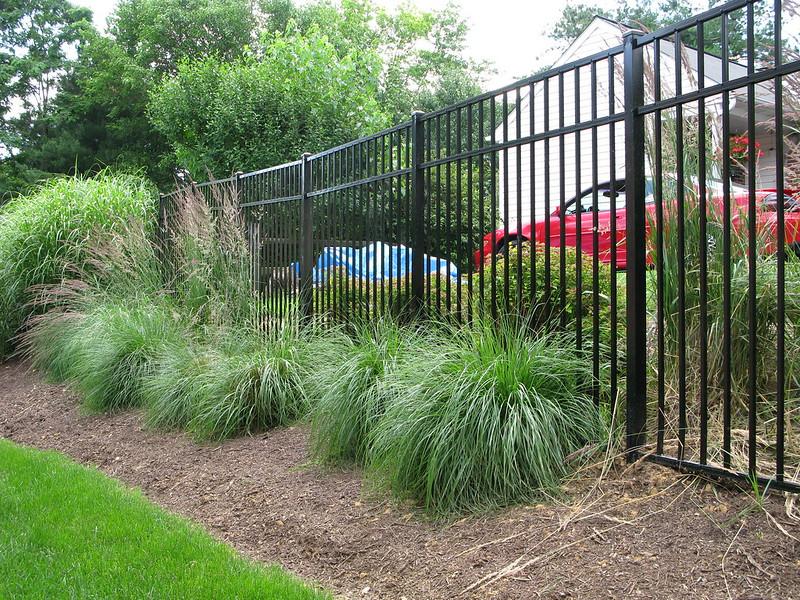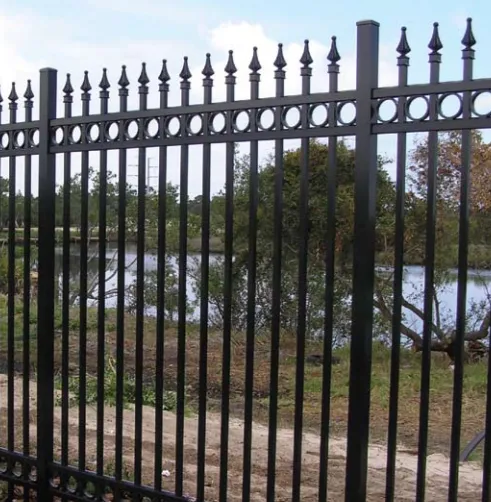The Perfect Aluminum Fence
Without the Mess
Discover No Dig Aluminum Fencing - By Top Tier Fencing, your locally owned, Michigan-made fencing solution.
Making the Right Choice: No Dig vs. Traditional Fencing Installation
Choosing the right fence for your property is more than just a decision—it's an investment in your home's future security, privacy, and functionality. At No-Dig Aluminum Fencing - By Top Tier Fencing, we understand the weight of this choice and are committed to providing you with all the information you need to make an informed decision between No Dig and traditional installation methods.
Fencing not only defines the boundaries of your property but also contributes to its value and your quality of life. With innovations in fencing technology, the traditional method of installing fences, which often involves extensive digging, concrete setting, and landscape disruption, is no longer the only option. The revolutionary No Dig method offers a compelling alternative, promising a blend of durability, ease, and minimal impact on your property.
As you consider this significant investment, it's crucial to explore all avenues to ensure that your chosen fence meets your needs today and can adapt to your future aspirations. This guide is designed to provide a comprehensive comparison of No Dig fencing against traditional installation methods, covering aspects such as installation time, flexibility, impact on your yard, and overall durability. Our goal is to arm you with the knowledge to choose not just a fence, but a lasting addition to your home that brings peace of mind and beauty to your outdoor space.
Let's dive into the details to help you understand why No Dig fencing could be the perfect choice for your property, ensuring that your investment is as wise as it is beautiful.
Installation Time

No Dig Fencing:
Streamlines the setup process, enabling a fence to be installed significantly faster than traditional methods—often within a day. This swift installation is not only convenient but also reduces labor costs and the overall project timeline.
Traditional Fencing:
The need for digging post holes and setting posts in concrete extends the installation over several days. The prolonged process increases labor costs and delays the enjoyment of your new fence.
Flexibility, Adaptability, and Future Adjustments

No Dig Fencing:
Beyond its ease of installation, No Dig fencing excels in flexibility. Should you decide to adjust the layout or move the fence, the materials can usually be reused, offering a sustainable and cost-effective solution. This adaptability is ideal for evolving landscaping designs or changing property needs.
Traditional Fencing:
Once set in concrete, traditional fence posts are permanent and cannot be reused if adjustments are needed. Any changes often require starting from scratch, with additional costs and materials, making it less adaptable to future landscaping changes.
Strength and Durability

No Dig Fencing:
Contrary to what some might assume, No Dig installation can significantly enhance the fence's strength. The engineering behind this method ensures that fences are not only quick to install but are also robust against environmental challenges, offering long-lasting security and aesthetic appeal.
Traditional Fencing:
While traditional fences can be strong, their susceptibility to weathering, rust, and decay can compromise their longevity and require more frequent repairs or replacements.
Impact on Yard

No Dig Fencing:
There's virtually no disruption to your yard, eliminating the need for reseeding or landscaping post-installation. This method preserves your lawn and garden, allowing for immediate enjoyment of your outdoor space.
Traditional Fencing:
The excavation required for traditional fencing often damages the landscape, necessitating additional efforts and expenses in lawn repair and landscaping to restore the yard's appearance.
Chance for Mishaps

No Dig Fencing:
The installation process, which involves driving a 2" square I-beam into the ground, greatly minimizes the risk of damaging underground utilities compared to traditional methods, making it a safer choice.
Traditional Fencing:
Traditional installation requires at least a 9" hole. Digging large holes for fence posts increases the likelihood of hitting underground lines, which can lead to costly repairs and safety hazards.
Post Shifting and Heaving

No Dig Fencing:
Its unique installation method makes it less prone to post heaving. Without concrete footings, the risk of heaving due to freeze-thaw cycles is significantly reduced, ensuring more stable and long-lasting fence integrity.
Traditional Fencing:
The concrete used in traditional fence installations can contribute to post heaving in freezing conditions. Water seeping into the ground can freeze, expand, and push the post upwards, leading to stability issues and necessitating repairs.
Repairs and Maintenance

No Dig Fencing:
Repairs, including damage from falling limbs or animal activity, are typically easier and more affordable with No Dig fencing. Parts can be replaced or adjusted without extensive work or significant landscape disruption.
Traditional Fencing:
Repairs on traditional fences often involve complex work, including excavation to replace posts set in concrete. This process can be costly and time-consuming, adding to the overall maintenance burden.
Seasonal Installation Limitations

No Dig Fencing:
Offers the unique advantage of year-round installation, even in winter, without the complications of frozen ground affecting the process. This method bypasses the need for concrete, making it not only quicker but also unaffected by cold weather, granting homeowners unparalleled flexibility in timing their fencing projects.
Traditional Fencing:
Installation is weather-dependent, with cold temperatures and frozen ground often delaying projects until warmer months. This limits planning flexibility, potentially impacting property security and landscaping schedules.

